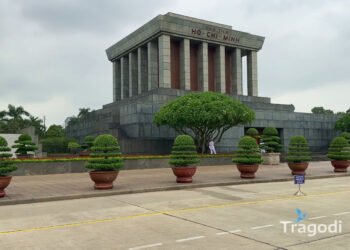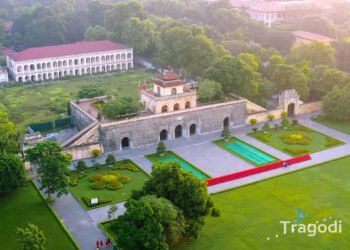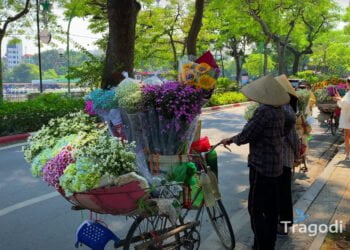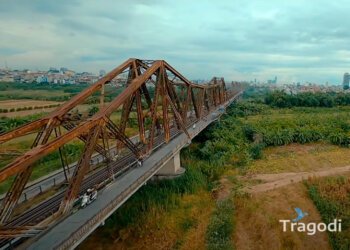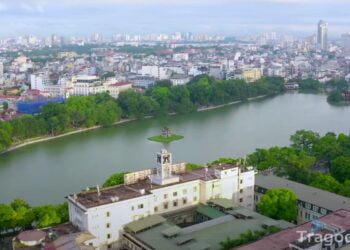
1. Ba Dinh Square – Ho Chi Minh Mausoleum
2. Hoan Kiem Lake
3. Hanoi Old Quarter
4. Temple of Literature
5. St. Joseph’s Cathedral
6. Tran Quoc Pagoda
7. Imperial Citadel of Thang Long
8. Hanoi Opera House
9. Hoa Lo Prison
10. Vietnam Museum of Ethnology
11. Bat Trang Ceramic Village
12. Ho Chi Minh Museum
13. Dong Xuan Market
1. Ba Dinh Square – Ho Chi Minh Mausoleum
If you visit Hanoi, you should not miss Ba Dinh Square – Ho Chi Minh Mausoleum, the political center of Vietnam with the National Assembly, the Presidential Palace, the Ho Chi Minh Museum, and other monuments. This is where President Ho Chi Minh read the Declaration of Independence on September 2, 1945, marking the birth of the Democratic Republic of Vietnam. You can also pay respect to the embalmed body of Ho Chi Minh, the beloved leader of the Vietnamese people, in the mausoleum.
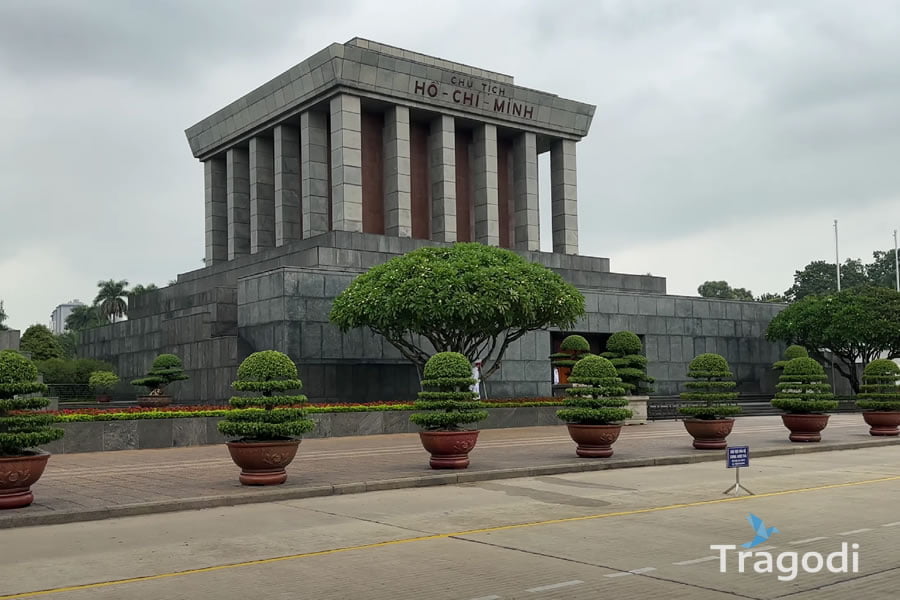
2. Hoan Kiem Lake
Hoan Kiem Lake, or the Lake of the Returned Sword, is the heart and soul of Hanoi. The lake is surrounded by shady trees, ancient temples, and bustling streets. You can take a stroll around the lake, enjoy the fresh air and the peaceful atmosphere, or visit the Ngoc Son Temple and the Turtle Tower, two iconic landmarks of Hanoi. Hoan Kiem Lake is also the venue for many cultural and festive events, such as the water puppet show, the night market, and the flower festival.
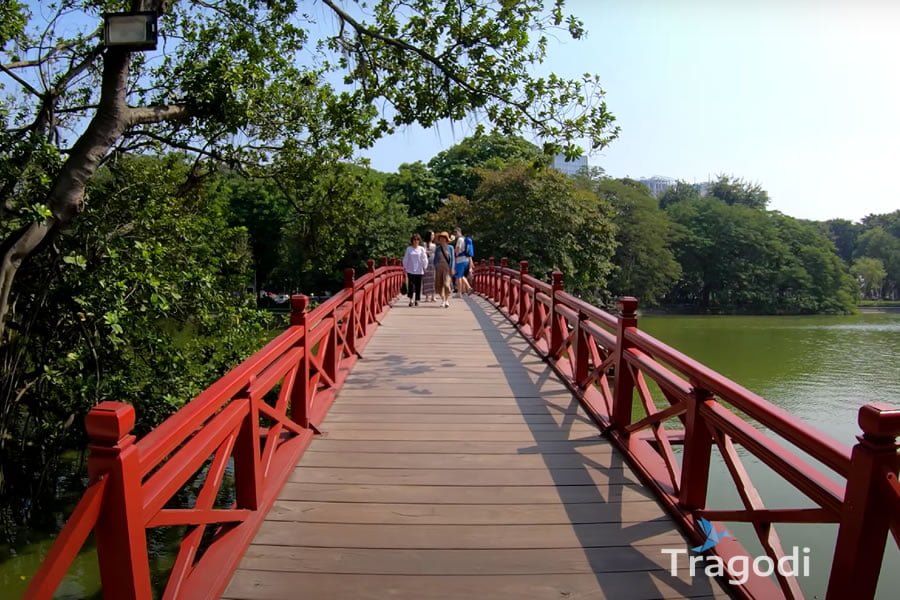
3. Hanoi Old Quarter
Hanoi Old Quarter is the oldest and most lively area of the city, where you can experience the authentic Hanoi culture and lifestyle. The Old Quarter consists of 36 streets, each named after the traditional craft or product sold there, such as silk, silver, paper, or herbs. You can explore the Old Quarter by walking, cycling, or taking a cyclo ride, and discover the hidden gems of Hanoi, such as the ancient houses, the street art, the museums, and the temples. You can also enjoy the delicious street food, the vibrant nightlife, and the unique souvenirs in the Old Quarter.
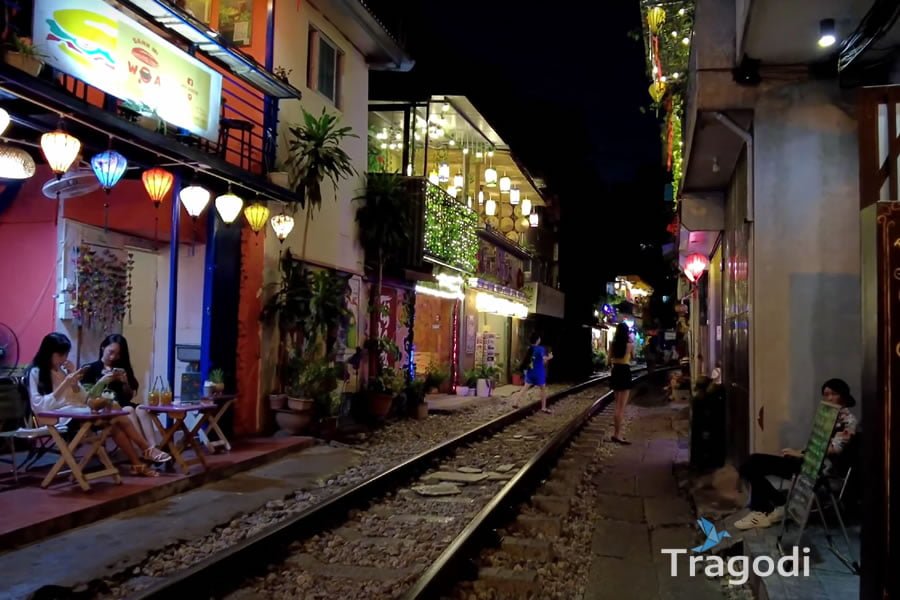
4. Temple of Literature
The Temple of Literature is the first university of Vietnam, founded in 1070 by King Ly Thanh Tong. The temple is dedicated to Confucius, the sages, and the scholars, and is a symbol of the Vietnamese education and culture. The temple has five courtyards, with various pavilions, halls, statues, and gardens. You can admire the architecture, the calligraphy, and the stone steles that record the names of the graduates of the royal examinations. The temple is also a popular place for students to pray for good luck before exams.

5. St. Joseph’s Cathedral
St. Joseph’s Cathedral is the oldest church in Hanoi, built in 1886 by the French colonialists. The church has a Gothic style, with a large dome, two bell towers, stained glass windows, and a statue of the Virgin Mary. The church is open for visitors and worshipers, and holds mass several times a day. The church is also a favorite spot for young people to hang out, especially at night, when the church is illuminated by colorful lights.
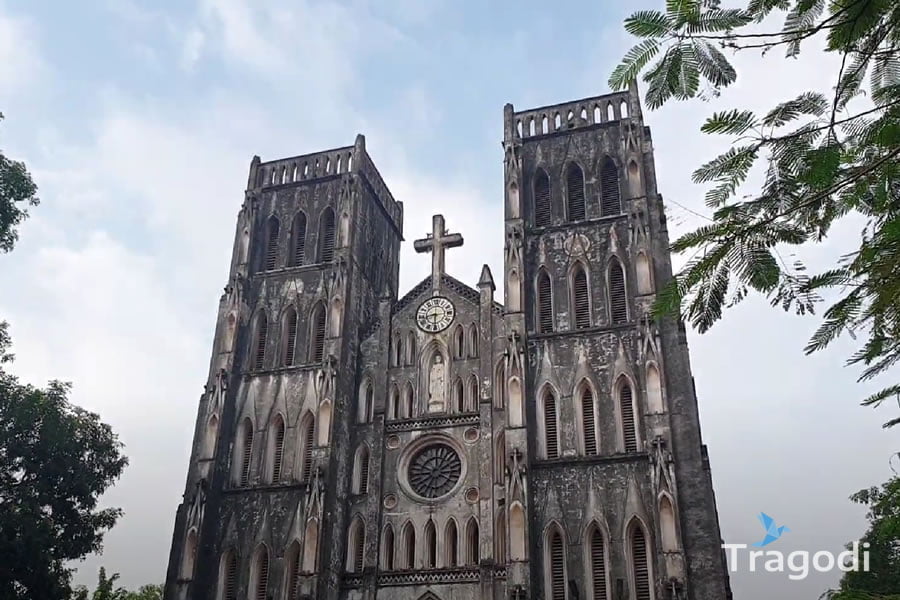
6. Tran Quoc Pagoda
Tran Quoc Pagoda is the oldest pagoda in Hanoi, dating back to the 6th century. The pagoda is located on a small island in West Lake, the largest lake in Hanoi. The pagoda has a unique architecture, with a multi-tiered tower, a lotus-shaped pedestal, and a golden statue of Buddha. The pagoda is also home to many ancient relics, such as the sacred bodhi tree, the stone steles, and the bronze bells. The pagoda is a place of worship and meditation, as well as a scenic spot for visitors.
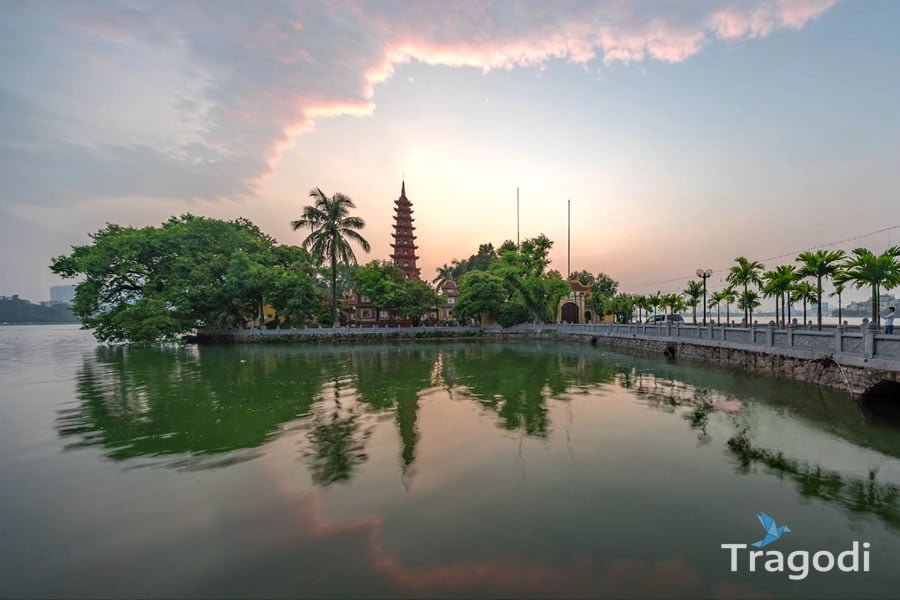
7. Imperial Citadel of Thang Long
The Imperial Citadel of Thang Long is a cultural-historical relic complex of Vietnam, located in the center of Hanoi. This is where the formation and development of the capital Thang Long – Dong Kinh – Hanoi through the Ly, Tran, Le, Nguyen dynasties were witnessed. The Imperial Citadel of Thang Long has an area of about 18,000 hectares, including many unique architectural works such as city gates, palaces, archaeological sites… The Imperial Citadel of Thang Long was recognized by UNESCO as a World Cultural Heritage in 2010. The Imperial Citadel of Thang Long is an attractive tourist destination, helping visitors understand more about the history, culture, and tradition of the Vietnamese people.
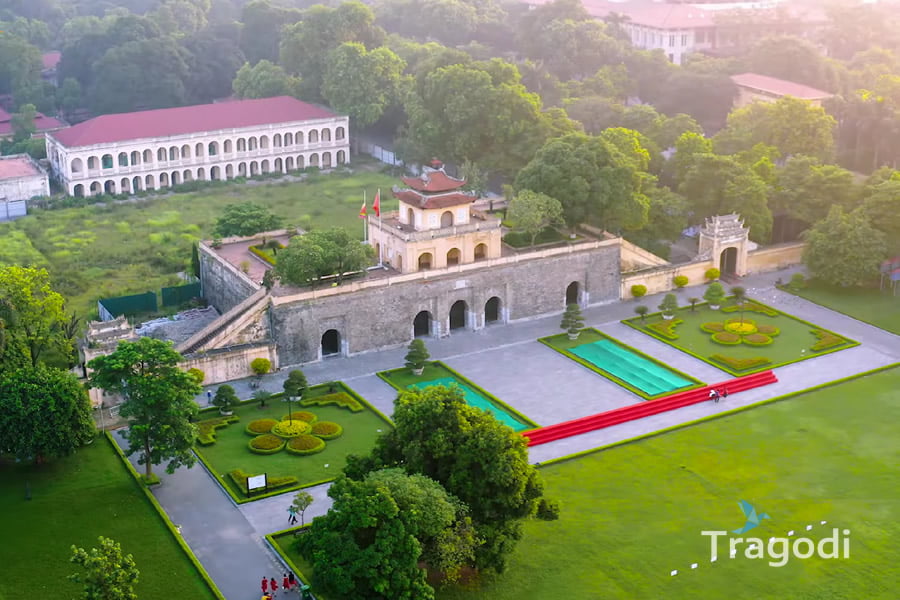
8. Hanoi Opera House
Hanoi Opera House is one of the most elegant and impressive buildings in Hanoi, built in 1911 by the French colonialists. The opera house has a neoclassical style, with a grand facade, a large dome, and a marble staircase. The opera house is the venue for many cultural and artistic performances, such as opera, ballet, drama, music, and dance. You can watch a show at the opera house, or take a tour to learn about the history and architecture of the building.

9. Hoa Lo Prison
Hoa Lo Prison, or the Hanoi Hilton, is a former prison that was used by the French colonists and the North Vietnamese government. The prison was notorious for its brutal conditions, its torture methods, and its political prisoners. The prison is now a museum that displays the history and the artifacts of the prison, such as the cells, the guillotine, the shackles, and the personal belongings of the inmates. The museum also tells the stories of the prisoners, especially the American pilots who were shot down during the Vietnam War.
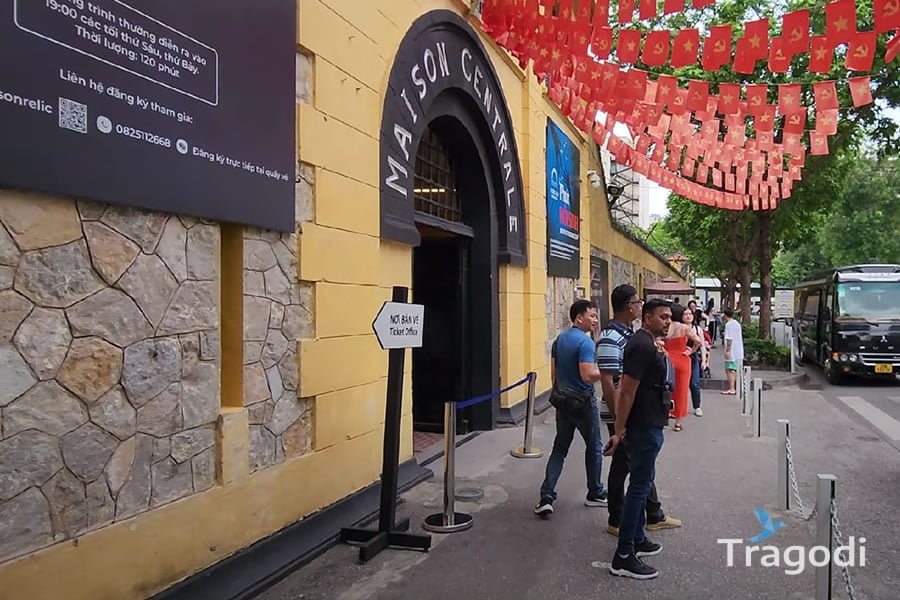
10. Vietnam Museum of Ethnology
Vietnam Museum of Ethnology is a museum that showcases the diversity and the richness of the Vietnamese culture and ethnicity. The museum has two main areas: the indoor exhibition and the outdoor exhibition. The indoor exhibition displays the artifacts, the costumes, the tools, and the models of the 54 ethnic groups of Vietnam. The outdoor exhibition displays the traditional houses, the gardens, and the water puppet theater of the ethnic groups. The museum is a great place to learn about the Vietnamese culture and to participate in the cultural activities.

11. Bat Trang Ceramic Village
Bat Trang Ceramic Village is a village that specializes in making and selling ceramic products, such as pots, vases, bowls, plates, and statues. The village has a history of more than 1,000 years, and is famous for its high quality, its variety, and its creativity. You can visit the village to see the process of making ceramic products, from molding, painting, to firing. You can also buy the ceramic products as souvenirs, or make your own products at the workshops.
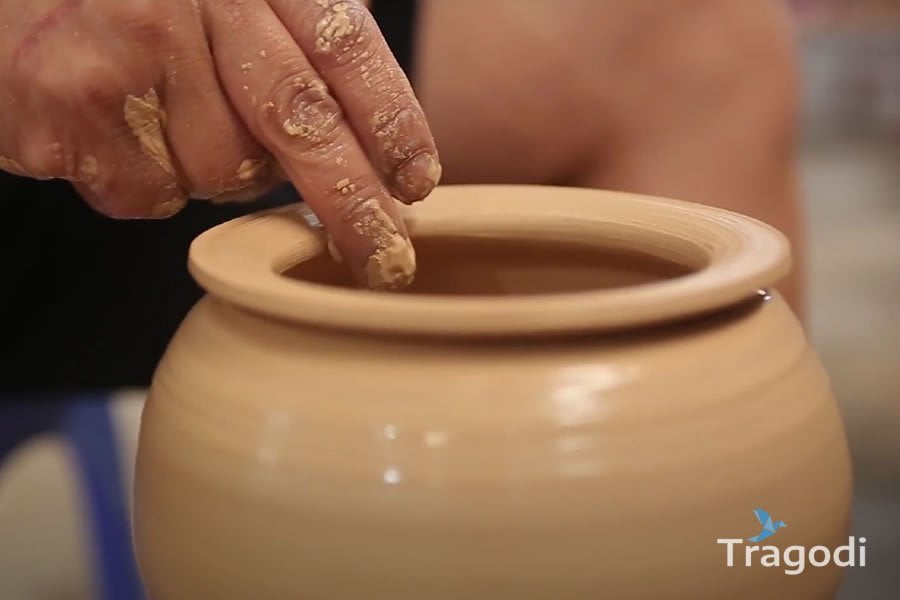
12. Ho Chi Minh Museum
The Ho Chi Minh Museum is a historical and cultural site in Hanoi, Vietnam, dedicated to the life and legacy of the founding father of the country. It is located in the same area as the Ho Chi Minh Mausoleum, the Presidential Palace, and the One Pillar Pagoda, forming a complex of attractions for visitors from inside and outside the country. The museum covers an area of about 18,000 square meters, and displays various artifacts, documents, and exhibits related to Ho Chi Minh’s revolutionary activities, ideology, morality, and style. The museum was inaugurated on May 19, 1990, on the occasion of Ho Chi Minh’s 100th birthday. The Ho Chi Minh Museum is a place to learn more about the history, culture, and tradition of the Vietnamese people.

13. Dong Xuan Market
Dong Xuan Market is the largest and the oldest market in Hanoi, located in the Old Quarter. The market sells a variety of products, such as clothes, accessories, electronics, household goods, and souvenirs. The market is also famous for its food, such as noodles, spring rolls, pancakes, and snails. You can visit the market to shop, to eat, or to experience the local culture and lifestyle. The market is also a place for many cultural and festive activities, such as the night market, the flower market, and the folk performances.
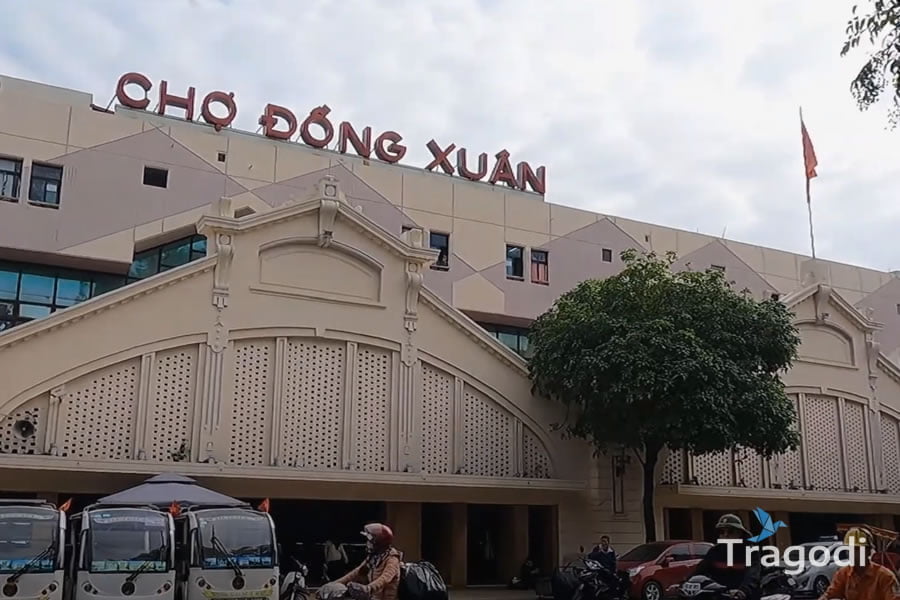
Hanoi has a rich and diverse culture with a long history, it is also a developing, dynamic, and modern city. Hanoi has many tourist destinations that can cater to the tastes and preferences of various tourists. Whether you want to learn about history and culture, enjoy the beauty of nature and scenery, or taste delicious food and experience nightlife, Hanoi has something for you.


